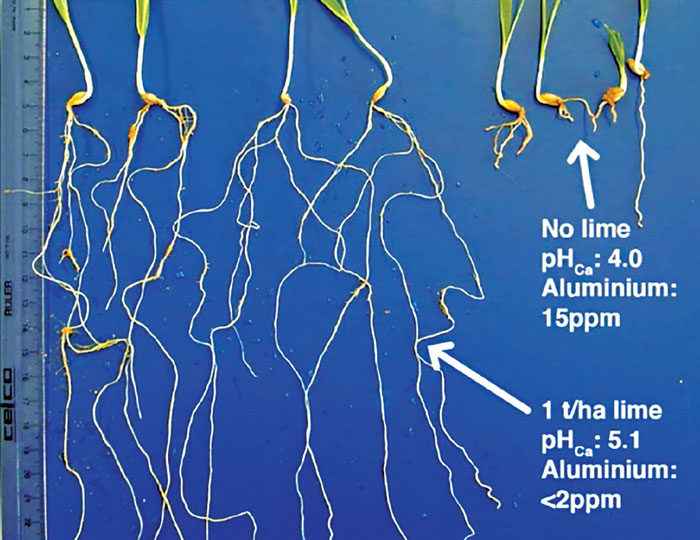No-Till Farmer
Get full access NOW to the most comprehensive, powerful and easy-to-use online resource for no-tillage practices. Just one good idea will pay for your subscription hundreds of times over.

PLANT HEALTH. There was a stark improvement in the root systems of these barley seedlings after about 890 pounds per acre of lime. Soil pH rose from 4 to 5.1, and parts per million of aluminum declined from 15 to less than 2. Photo by: João Antonangelo
For no-tillers, maximizing yields, maintaining healthy soil and fostering robust microbial life require the correct soil pH. Biological life, water retention, nutrient uptake, herbicide and insecticide effectiveness and yields all suffer in acidic soils
Soil acidification can occur as a result of natural, beneficial processes, such as rainfall and the decay of organic matter. The year-over-year use of nitrogen (N) fertilizers can also cause it, says João Antonangelo, assistant professor of applied soil chemistry at Washington State University.
“If you have ammonium as a source of inorganic N fertilizer, very quickly it’s going to become nitrate during the oxidation and nitrification process,” Antonangelo says. “From ammonium to nitrate, it releases 4 hydrogens to the soil solution, which acidifies the soil.”
While N fertilizer is often necessary for no-tillers’ crops, this acidification process has a compounding effect that can lead to reduced yields and a continually increasing fertilizer requirement, according to Antonangelo.
N application, regardless of pounds per acre, will progressively reduce soil pH year after year. Rates above 60 pounds per acre will see the most dramatic acidification, reaching pH levels as low as 4.2 and resulting in significant yield losses, according to a 2018 presentation by Hailin Zhang, regent professor of plant and soil sciences at Oklahoma State University. In the study, 30-60 pounds per acre of N tended to result in the highest yields and the least acidification.
“Every year, farmers apply N based on a yield goal that was previously calibrated by a university or other private…